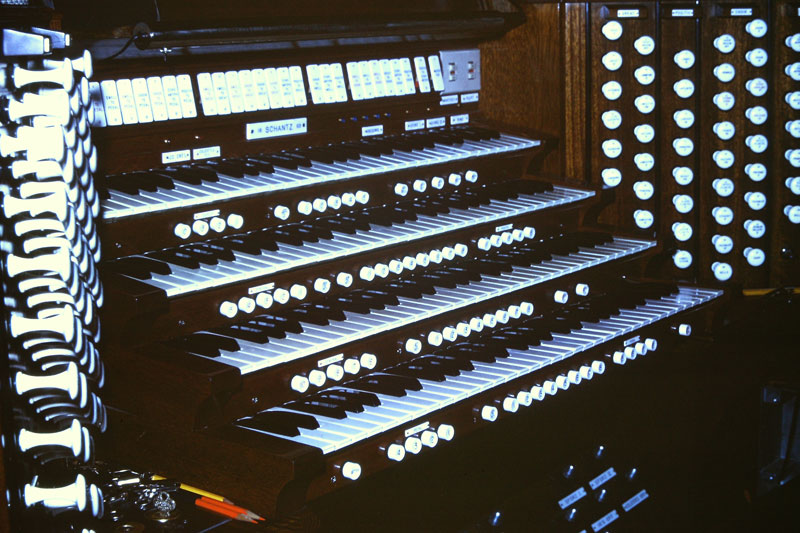How To Play A Hymn On The Organ

There are probably several opinions as to how an organist is supposed to play a hymn, but one incontrovertible opinion is this: don’t play a hymn on the organ like you would on a piano, because an organ is NOT a piano. As an organ has no sustain pedal, lifting the hands between each chord, as one would when playing a hymn on the piano, yields a very choppy, non-legato, and non-singing sound. We organists want to create a sense of singing legato (as we indeed are accompanying a singing venture), and, at the same time, a sense of dependable rhythmic drive that helps keep our singers ‘with us’ in tempo and articulation.
The most accepted technique for playing a hymn on the organ is this:
- The R.H. plays the soprano and alto parts
- The L.H. plays the tenor part
- The pedals play the bass line
Thus, the right hand will almost always be playing two notes, and the left hand one note. For the listeners’ sensation of legato and, in simultaneity, rhythmic pulse, the commonly-accepted rule is that the right hand must master two techniques within the one hand so that all repeated notes in the soprano part are separated (lifted between each note) while repeated notes in the alto part are ‘held’ down until the next note change. The left hand (tenor part) separates, or repeats—as in the style of the soprano part—all repeated notes. The pedals are played like the alto line where all repeated notes are held down until the next note change.
There are many other hints and suggestions I can offer—involving acoustics, time left between verses, dynamics, tempo, reharmonizations, descants, and more—that can turn routine and possibly mundane week-after-week hymn-singing into something truly glorious and resplendent. I invite you to contact me at email@edwinrtaylor.com if you would like to know more, and I will try to help and inspire.
